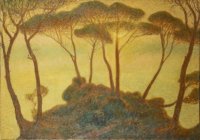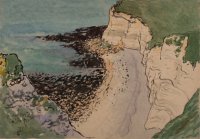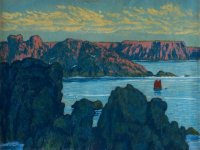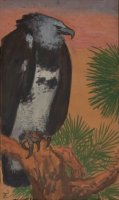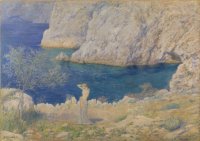
Jean-Francis Auburtin (1866-1930) is part of a long tradition of painters who paint in nature, 'en-plein-air'. These include Delacroix, Courbet, Boudin, Jongkind and, of course, Claude Monet.
As a true 'portraitist of nature', Auburtin tuned into the character and atmosphere each landscape he painted. While out walking, he would home-in on a particular viewpoint and capture it in his sketchbooks, thus building up a rich repertoire of pictorial forms. His work is largely dominated by coastal views, to the extent to which art historian Christian Briend called him a “symbolist of the sea”.
In the South of France, in response to the quality of light, Auburtin delighted in strength of colour and contrast. In Normandy, he favoured less saturated hues and softer gradations of tone. In Brittany and the Pyrenees, he turned to themes and compositions found in Japanese prints, of which he was an avid collector. For Auburtin, landscape was also the setting for a modern Arcadia in which nymphs, mermaids and fauns commune with nature.
In our extensive retrospective exhibition, the Museum of Lodeve invites you to discover the diverse work of this intriguing painter.
Follow us
on social networks
